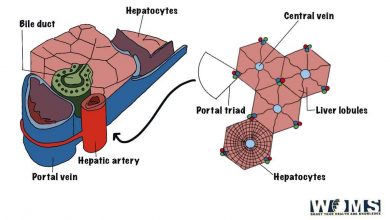Toe Shortening Surgery: Procedure, Complications and Recovery

Toe shortening surgery is a routine cosmetic procedure to deal with the basic deformities of the toe. These deformities of the toe may include crooked toes, hammer toes, or angular toes. In the same way, there are long toes that require surgical modification to deal with various problems. Moreover, there are several surgical methods for toe reduction depending on the length and severity of the toes.
This article explains the toe shortening surgery procedure with other basic information to make a decision prior to the surgery. In addition, it will also help you to explore the answers to all the questions revolving in your mind.
What is a long toe?
The most common cause of the long toe is genetic issue. The second toe is one of the most common long toes convincing the patients to undergo toe shortening surgery. The most common complaints of the patients include pain encroaching toenails and pain at the top of the toe. The long toe continuously hits the inside of the shoe, causing friction and inducing continuous pain.
Patients having long toes may also have hammer toe problems. In this condition, the middle toes are usually bent in an upward direction leading toward calluses or corns. Long toes affecting the second and third toes are known as Morton’s toes. The most common problems arising from this condition are as follows:
- Digital deformities
- Difficulty in finding accurate shoe sizes to accommodate long toes
- Shoes rubbing over the joints cause frictional pain and may also cause callus, swellings, or corns.
How to select the best patient for toe shortening surgery?
It is a significant factor to opt out of the best suitable patients for the surgical procedure. Any patient who lacks sufficient motivation and is not compliant with the surgery may lead to poor outcomes leading to treatment failure. There are some of the best factors that must be on the part of the patient to undergo toe shortening surgery.
- Pain in the joints
- Deformities of the toe
- Aesthetic concerns
- Self-motivation to seek cosmetic procedure
- Unable to person sports or leisure activities
- Compliant with the toe shortening surgery
If your patient fulfills these essential criteria, then you can go for toe shortening surgery to make your feet aesthetic.
When to seek medical care?
A slight long toe is not a problem for most patients. But if you are suffering from any of the following complex symptoms, you must consult your doctor regarding the management.
- Pain on the tip of the toe
- Callus formation on the toe
- A problem in walking or performing any daily life activities
- Toe deformities
- Aesthetic concern
The treatment option depends on the overall health of the patient, symptoms, and severity of the problems. Your doctor will suggest the best possible option for you according to your problem.
Toe shortening surgery
There is a surgical treatment available for long toes in the form of toe shortening surgery. The surgical procedure involves the specific portion of the toe with a contracted joint. In this way, it helps to realign the toe quite straight, reducing the severe symptoms of long toes.
What are the general procedures for toe shortening surgery?
The general basics for the toe shortening surgery involve the removal of the bone from the toe and pinning with a surgical wire. There are two common methods for toe shortening surgery. These are as follows:
- Joint resection – This surgical procedure includes the removal of the small portions of one of the two minor joints of the toe. In this way, it helps to shorten the toe making it comfortable for the patients. This procedure is also known as interphalangeal joint arthroplasty.
- Bone mending procedure – This toe shortening surgery reduces the contracted toe by the removal of the complete toe joint. It helps to fuse the bone ends at a shorter position. Fixation of the bones is necessary to keep the bones in their place during the healing process. This fixation process involves the use of an implant or temporary wire inside the toe. This process is also known as interphalangeal joint arthrodesis.
What are the other non-surgical management protocols for long toe?
Besides going for surgical procedures, there are some other non-surgical methods for the less severe problems related to the long toe. These methods reduce the severe symptoms of long toe and limit the progression into severe problems. Some of the basic protocols are as follows:
- Better to wear supportive and medicated shoes to provide proper rest to the long toe.
- Use of an arch support
- Better to use shoes offering a wide toe box
- Modify your activities not stressing your toes
- Proper care of the callus formed on the toes
- Use of spot stretchable shoes
In contrast to these general treatment regimens, there are also some other non-surgical methods to deal with the long toe. These are as follows:
- Anti-inflammatory drugs – These drugs are helpful to reduce the inflammation and pain surrounding the long toes and joints. It will also help to reduce the swelling around the joints to prevent the progression of the symptoms.
- Physiotherapy – it helps the body muscles to function properly and stretch the tight muscles. It will help to prevent the exacerbation of the symptoms related to the long toes.
- Toe pads or splints – there are specific pads and splints available to reduce pressure pain or frictional irritation due to footwear. It can relieve the pain in the toes and reduce the progression.
- Injections – there are cortisone injections that act as anti-inflammatory medication to reduce the swelling and pain in the toes. These injections must be used with proper precautionary measures to prevent any weakness in the supporting ligaments of the toes.
- Customized foot orthotics – it is better to go for the customized mold of your foot for proper support and comfort of your feet.
How long does it take to recover after toe shortening surgery?
The recovery of the toes depends on the method of toe shortening surgery. Healing of the toes may take up to 6 weeks in a normal healthy person. Most people can continue their daily activities from 2 weeks to 3 months depending on the severity of the toe deformity. Minor toe deformities can heal in up to two weeks. But there are several other factors like age, malnutrition, smoking, or immune disorders that can disturb the normal healing period making it longer.
What are the common complications of toe shortening surgery?
Some complications are usually associated with any kind of surgery and the use of anesthesia. There are some common complications associated with toe shortening surgery. These are as follows:
- Post-operative infection
- Pain
- Swelling
- Hematoma formation
- Bleeding
- Poor healing of the wound
- Flail toe
- Unaesthetic scar formation
Conclusion
Toe shortening surgery is a recommended surgical management for patients having long toes. Long toes are usually genetic and may cause several irritating problems due to contracted joints. In addition, a tight fit of the shoes may also induce the formation of callus or corns. Moreover, this condition is also painful for the patients.
Toe shortening surgery deals with all such problems associated with the feet deformities. You can get visual and great outcomes after the toe shortening surgery. Review the article thoroughly and if you think you are suffering from the same situation, consult your surgeon and make the best decision for yourself.
Frequently asked questions (FAQs)
Which type of anesthesia is usually needed for toe shortening surgery?
For toe shortening surgery, usually, local anesthesia is commonly applied with proper care. But, this surgery can be performed under regional, local, general, or spinal anesthesia.
Is it a good option to go for toe shortening surgery?
Toe shortening surgery can help you to get relief from various issues arising from the long toes. This procedure can relieve pain, improve the symmetry and aesthetics of the feet, and provide the best fit for shoes. For all these reasons, toe shortening surgery seems worthy to solve all these problems.
How much time does this toe shortening surgery take?
Toe shortening surgery is performed as an outpatient procedure under regional or local anesthesia with proper monitoring. This procedure usually takes 25 to 30 minutes to complete the surgery. Patients can continue their normal work activities after a follow-up of 6 weeks of the healing period.




